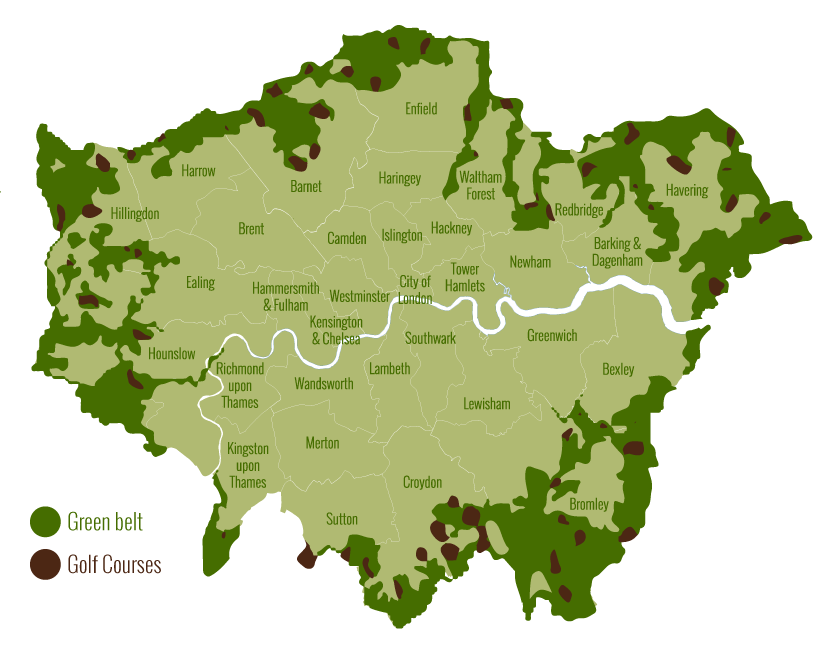Housing crisis: Greenbelt golf courses cover an area twice the size of Kensington and Chelsea

There isn't enough room in London to sustain its growing population, with an estimated 50,000 new homes needed each year just to keep up.
In 2014, just 20,000 new homes were built in the greater London area – which is far from being on track to meet chancellor George Osborne latest target of 400,000 new homes by 2025.
There is an obvious stumbling block – how can we build so many homes when 22 per cent of the capital is designated green belt area, protected from the construction of new buildings?
The green belt is intended to protect countryside and prevent urban sprawl – the merging of London with outer villages and towns to create a mega metropolis, but its existence is making it more difficult to beat the capital's housing crisis.
A report by London First, planning consultancy Quod and Paul Cheshire of the London School of Economics, suggests London's local authorities should review the rules protecting green belt land, in order to ease the strain.
Shared with the FT, one of the points it highlights is that a sizeable chunk of the green belt area is not just made up of pleasant countryside, but is instead used for other purposes such as golf courses.
“The truth is that green belt land covers a range of uses. There is beautiful countryside with public access but there is also a lot of intensive arable and semi-derelict land. Golf courses — just in the GLA — cover an area almost twice as big as the borough of Kensington and Chelsea,” the report says.
London's golf courses
There are an estimated 71 golf courses in the Greater London Area, and in the green belt alone they make up 7.1 per cent of protected land, which is around 2,500 hectares. Below is a map showing where they are located within the green belt.

Yet the evidence suggests that golf courses are not good for the environment, since clearing large areas of land can disrupt habitats and the large amount of pesticides and fertilisers used can have a polluting influence.
According to Audobon International, the environment education organisation, these are some of the main negative impacts golf courses have on the environment:
- Withdrawal of large quantities of water for irrigation
- Degradation or loss of natural areas
- Health hazards from chemical handling and applications
- Loss and fragmentation of wildlife habitats
- Alteration or damage to wetlands
- Replacement of natural plant communities with intensively managed landscapes and non-native plants